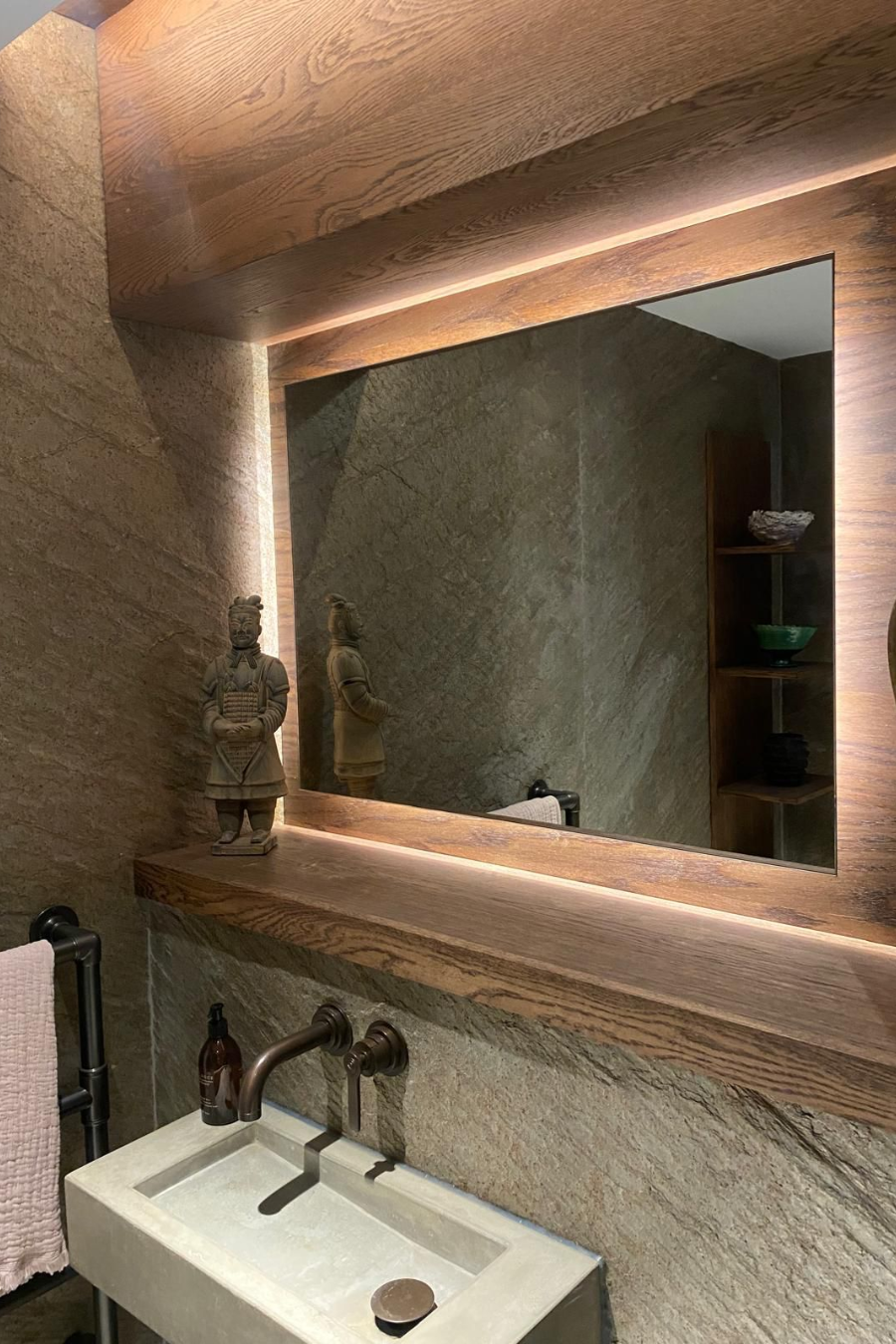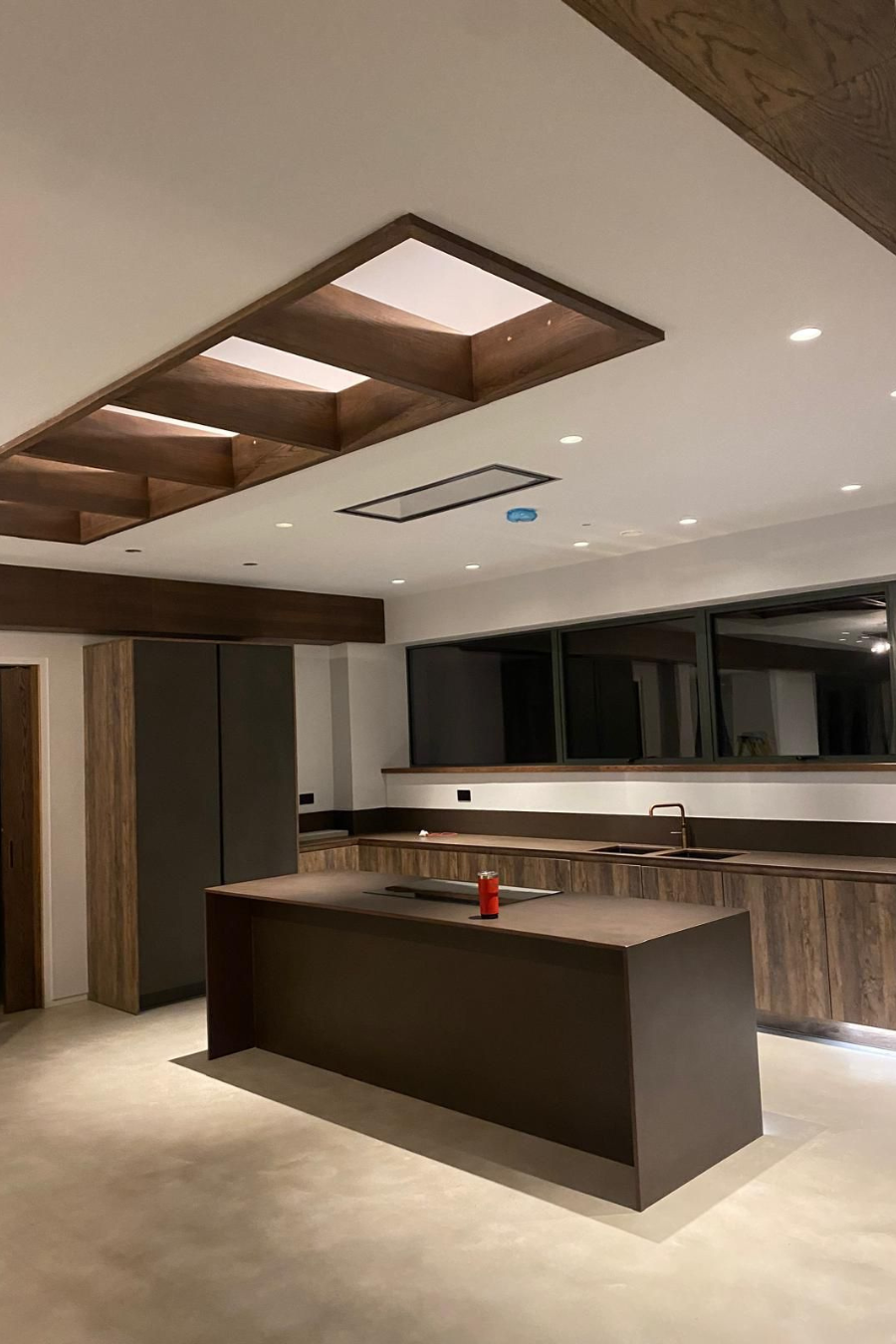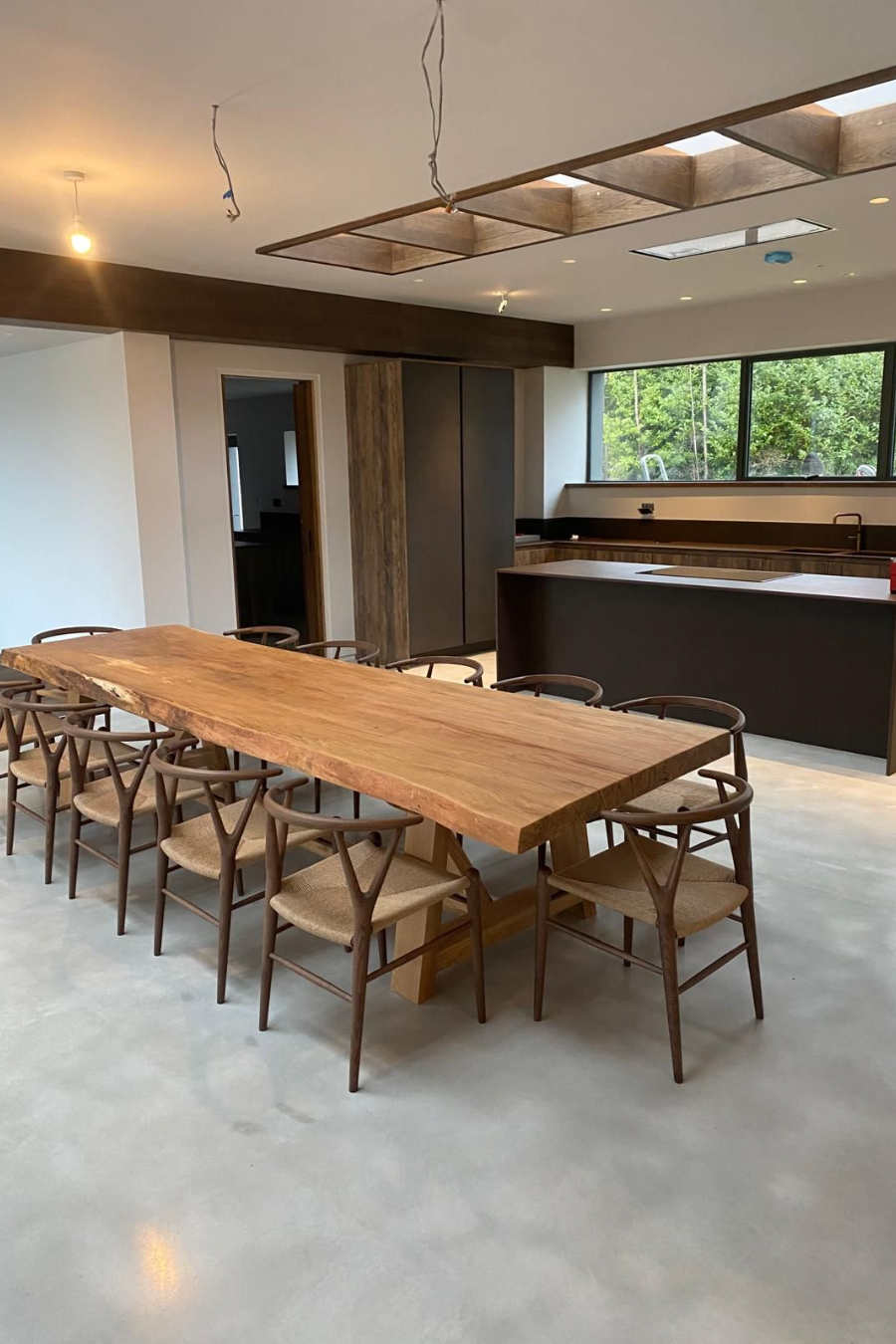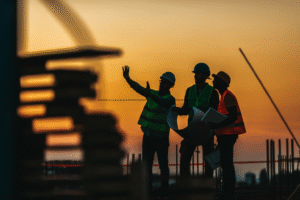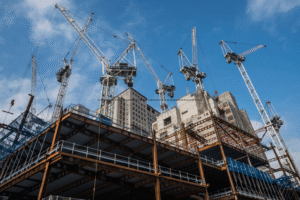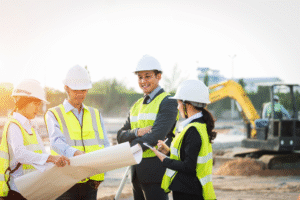What Are Eco-Friendly Construction Methods in Wakefield?
Eco-friendly construction in Wakefield integrates sustainable design practices and materials that reduce environmental impacts while ensuring durability and energy efficiency. Builders such as Solved Construction are increasingly using innovative techniques to comply with stricter regulations and meet sustainability goals.
Which Sustainable Building Materials Are Used in Wakefield?
Materials commonly used include recycled steel, reclaimed wood, low-carbon concrete, and green insulation products. Recycled steel reduces carbon emissions through a high strength-to-weight ratio; reclaimed wood adds aesthetic value and lowers deforestation; and low-carbon concrete minimizes CO₂ emissions. These materials are chosen for their low embodied energy, recyclability, and ability to provide superior indoor air quality by being low in volatile organic compounds (VOCs). Backed by research and certifications, they meet modern building regulations and appeal to eco-aware homeowners.
How Do Energy-Efficient Techniques Improve Construction Outcomes?
Energy-efficient techniques such as passive solar design, high-performance insulation, and advanced window systems reduce a building’s energy usage. In Wakefield, these methods are incorporated from the design phase to maintain low energy demand throughout a building’s lifecycle. High-quality insulation and efficient HVAC systems contribute to thermal comfort and reduce the need for constant heating or cooling. The use of smart sensors and renewable energy sources like solar panels further optimizes energy use while cutting greenhouse gas emissions. Studies indicate that these measures can lower energy consumption by up to 40% compared to conventional practices.
What Role Does Water Conservation Play in Eco-Friendly Building?
Water conservation is a critical element of modern eco-friendly buildings. Techniques such as rainwater harvesting, low-flow plumbing, and drought-resistant landscaping help cut water consumption by up to 30% compared to traditional buildings. Greywater recycling repurposes wastewater for irrigation, while smart irrigation systems and permeable pavers improve stormwater management. These strategies protect local habitats from erosion and flood risks and contribute to lower household utility bills and overall resource conservation.
How Does Eco-Friendly Construction Benefit Wakefield’s Environment?
Eco-friendly construction reduces the carbon footprint of buildings, protects local ecosystems, and promotes a healthier natural setting. Benefits include energy conservation, waste reduction, and enhanced urban biodiversity.
In What Ways Does Sustainable Building Reduce Carbon Footprint?
Sustainable construction lowers carbon emissions by incorporating renewable energy systems, low-carbon materials, and energy-efficient design. New green buildings in Wakefield often meet passive house standards, ensuring low energy performance for heating and cooling. Using recycled and responsibly sourced materials and installing systems like solar photovoltaic panels and geothermal heating can reduce annual carbon emissions by 30–40%. Continuous energy monitoring helps maintain efficiency and encourages a community-wide shift to greener practices.
How Does Waste Reduction During Construction Protect Local Ecosystems?
Effective recycling programs, material reuse, and lean construction practices minimize construction waste and protect local ecosystems. Off-site prefabrication and careful resource planning reduce both the time on-site and overall waste, decreasing landfill use and toxic runoff. Diverting waste for recycling lowers transport-related pollution and fuel consumption, protecting soil and water quality while benefiting the local economy through material reintroduction into the supply chain.
Why Is Improving Air Quality Important for Wakefield’s Community Health?
Eco-friendly construction enhances air quality through the use of non-toxic, low-VOC materials and improved ventilation systems. Buildings with ample natural ventilation, green roofs, and living walls filter airborne pollutants, reducing respiratory illnesses by up to 25% in some studies. Improved indoor air quality not only supports better cognitive functions and lower stress but also reduces hospital visits for asthma and other conditions, making a significant positive impact on community health.
How Does Eco-Friendly Construction Benefit Wakefield’s Economy?
Eco-friendly construction offers economic advantages, including reduced operational costs, increased property values, and access to financial incentives.
How Do Energy-Efficient Buildings Lower Long-Term Operational Costs?
Energy-efficient buildings incur lower utility bills by utilizing high-performance insulation, energy-saving HVAC systems, LED lighting, and renewable energy sources like solar panels. Many projects achieve a return on investment within 5–7 years due to these savings. Reduced energy consumption not only enhances cash flow for homeowners and businesses but also boosts the economic resilience of the community as energy prices rise over time.
What Financial Incentives Support Sustainable Construction in Wakefield?
Wakefield offers various incentives such as grants, tax credits, low-interest loans, and rebate programs. These financial supports make investments in renewable energy systems and energy-efficient appliances more affordable and help improve property values. Such incentive programs encourage long-term investments in green building practices, further stabilizing the local economy and supporting sustainable development.
How Does Eco-Friendly Construction Increase Property Value Locally?
Properties built with sustainable practices often command higher prices due to lower operating costs, healthier indoor environments, and reduced environmental impacts. Energy-efficient homes can see a 5–10% increase in value compared to conventional buildings. Eco-friendly features enhance marketability, making properties more attractive to discerning buyers who value both aesthetics and functionality.
How Does Eco-Friendly Construction Promote Health and Wellbeing in Wakefield?
By prioritizing non-toxic materials, effective indoor air quality systems, and abundant natural lighting, eco-friendly buildings foster environments that support both physical and mental health.
What Are the Benefits of Using Non-Toxic, Low-VOC Materials?
Non-toxic, low-VOC materials greatly reduce indoor pollutants, protecting occupants from respiratory problems and allergies. Studies have shown that low-VOC paints and adhesives can cut airborne contaminants by up to 50%, leading to fewer health issues like headaches and dizziness. This shift is especially important in settings like schools and hospitals, where occupant health is critical.
How Do Sustainable Designs Improve Indoor Air Quality?
Incorporating natural ventilation, air-purifying plants, and mechanical filtration greatly enhances indoor air quality. Features such as operable windows and energy recovery ventilators, combined with strategically placed greenery, reduce symptoms of sick building syndrome and improve overall comfort and productivity. Advanced monitoring systems now enable real-time adjustments, ensuring a consistently optimal indoor climate.
Why Is Natural Lighting Important for Occupant Wellbeing?
Maximizing natural lighting through the use of large windows, skylights, and glass facades not only reduces reliance on artificial lighting but also offers significant mental health benefits. Natural light helps regulate circadian rhythms, leading to better sleep, improved mood, and increased productivity. By reducing the need for electrical lighting, these design choices also contribute to overall energy conservation.
What Challenges Does Wakefield Face in Adopting Eco-Friendly Construction?
Despite its benefits, eco-friendly construction confronts several challenges in Wakefield. Builders often deal with regulatory hurdles, higher initial costs, and widespread misconceptions about sustainable practices.
What Local Regulations Impact Sustainable Building Practices?
Outdated building codes and permitting processes can restrict the adoption of modern green technologies. For instance, zoning policies may limit renewable energy installations or advanced stormwater management techniques. Although efforts are being made to update these regulations, the transition requires close coordination between local government and industry, which can slow project progress and add to initial expenses.
How Can Construction Waste Management Be Improved in Wakefield?
Enhancing recycling protocols and encouraging material reuse are key to reducing construction waste. Lean construction techniques and partnerships with local recycling facilities help lower landfill reliance and reduce overall waste. Educating contractors on waste minimization further contributes to cost savings and environmental protection.
What Are Common Misconceptions About Eco-Friendly Construction Costs?
A prevalent misconception is that sustainable building is always more expensive upfront. However, while initial costs may be higher, long-term savings from reduced energy bills, lower maintenance expenses, and available financial incentives often result in a favorable cost-benefit ratio. Clear educational campaigns and transparent cost analyses can help shift this perception.
How Is Wakefield Green Builders Leading Eco-Friendly Construction Efforts?
Wakefield Green Builders are pioneers in promoting sustainable construction by offering innovative, environmentally friendly solutions that align with local goals. Their expertise in sustainability and regulatory compliance makes them a leader in the field.
What Sustainable Services Does Wakefield Green Builders Offer?
They offer a full range of services including project planning, material sourcing, energy efficiency audits, and waste reduction strategies. Their project management ensures compliance with local codes and sustainability targets across outcomes such as green commercial complexes, energy-efficient residences, and retrofitting projects. Their client-focused approach delivers immediate environmental benefits and long-term economic gains.
How Does Wakefield Green Builders Ensure Compliance With Local Standards?
By working closely with local authorities and industry experts, Wakefield Green Builders conduct detailed environmental impact assessments and energy modeling to ensure all projects meet current sustainability standards. Their proactive dialogue with regulators and active participation in sustainability committees help shape policies that benefit the entire community.
What Community Initiatives Support Wakefield’s Sustainable Future?
Wakefield Green Builders sponsor local green projects, host energy conservation workshops, and collaborate with schools to educate on sustainable practices. Their community outreach, including neighborhood clean-ups and tree-planting events, fosters a culture of environmental stewardship and sustainability within Wakefield.
How Can Residents and Businesses Support Eco-Friendly Construction in Wakefield?
Residents and local businesses can actively contribute by embracing eco-friendly upgrades and participating in local sustainability programs.
What Simple Steps Can Homeowners Take to Promote Sustainability?
Homeowners can begin by installing energy-efficient appliances, upgrading insulation, and using energy-saving lighting. Adding renewable energy sources such as solar panels or wind turbines, choosing low-VOC paints, and opting for sustainable flooring can further improve energy efficiency and indoor air quality. Simple water conservation measures like rainwater harvesting and low-flow fixtures also make a significant impact.
How Can Local Businesses Integrate Eco-Friendly Building Methods?
Businesses can reduce costs by retrofitting existing structures with energy-efficient systems and upgrading lighting and HVAC systems. Collaborating with green builders ensures that new or remodeled spaces incorporate renewable energy sources and advanced waste management strategies. By creating green office spaces with ample natural lighting and proper ventilation, companies not only cut costs but also enhance their brand reputation among eco-conscious consumers.
Where Can Wakefield Residents Find Resources and Support for Green Construction?
Local government websites, sustainability workshops, and initiatives led by organizations like Wakefield Green Builders offer valuable information on sustainable building techniques, financial incentives, and regulatory updates. Community forums and social media groups also serve as excellent platforms for sharing experiences and tips on green construction. Free consultations and seminars from local suppliers and environmental organisations further empower residents to make eco-friendly choices.
Table: Summary of Eco-Friendly Construction Benefits in Wakefield
Before the table, note that eco-friendly construction methods result in measurable improvements in building management and community well-being, making sustainability a powerful economic and health-driving force.
| Benefit Category | Key Methods | Main Advantages | Quantifiable Impact |
|---|---|---|---|
| Environmental | Sustainable materials, renewable energy | Reduced carbon footprint, lower emissions | Up to 40% energy reduction |
| Economic | Energy-efficient systems, recycling | Lower operational costs, increased property value | 5-10% increase in value |
| Community Health | Low-VOC materials, natural lighting | Improved indoor air quality, better sleep quality | 25% reduction in issues |
| Water Conservation | Rainwater harvesting, efficient plumbing | Reduced water usage, mitigated flood risks | 30% reduction in use |
| Waste Reduction | Lean construction, prefab components | Less landfill waste, lower processing costs | Major decrease in waste |
Frequently Asked Questions
Q: What defines eco-friendly construction in Wakefield? A: It focuses on using sustainable materials, energy-efficient techniques, and water conservation strategies to minimize environmental impacts, reduce carbon emissions, and lower construction waste.
Q: How do sustainable building materials benefit local residents? A: Materials like recycled steel, reclaimed wood, and low-carbon concrete reduce energy usage and carbon footprints while enhancing indoor air quality and long-term durability, lowering maintenance costs.
Q: What are the economic benefits of energy-efficient buildings? A: They lower operational costs by reducing heating, cooling, and lighting expenses, while also qualifying for financial incentives that increase property values and enhance economic stability.
Q: How can local businesses adopt eco-friendly construction practices? A: By retrofitting with energy-efficient systems, using green technologies, and collaborating with eco-friendly construction firms, businesses can lower costs, boost their brand, and appeal to eco-conscious consumers.
Q: What initiatives are available in Wakefield for promoting green construction? A: Residents and businesses can attend workshops, benefit from government programs, and join community initiatives such as sustainability fairs and recycling partnerships, all supported by local green builders.
Q: Are there any challenges associated with eco-friendly construction? A: Yes, challenges include outdated local regulations, higher upfront costs, and misconceptions about expense. However, financial incentives and regulatory updates help mitigate these issues.
Q: How does eco-friendly construction impact community health? A: It improves indoor air quality through low-VOC materials and better ventilation, reducing respiratory illnesses and enhancing overall wellbeing, while natural lighting supports mental health and productivity.
Final Thoughts
Eco-friendly construction in Wakefield is transforming the way communities are built by providing environmental, economic, and health benefits. Through sustainable materials, energy-efficient techniques, and effective water conservation, buildings become more resilient and cost-effective. With local green builders leading the charge and community initiatives promoting sustainability, embracing eco-friendly construction is key to building a greener, healthier future for Wakefield.


